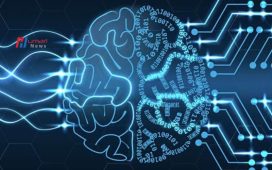Introduction:
Are you looking to develop your AI software from scratch? Building AI software can be a complex and challenging task, but with the right guidance and best practices, you can create a successful AI software product. In this blog we seek to cut through the clutter and go into the specifics of developing useful AI solutions for the real world that address issues rather than follow trends.
Creating AI Software: Key Actions
Define Your Objectives:
The first step in building AI software is to clearly define your objectives. What problem do you want the AI software to solve? What are the desired outcomes? Having a clear understanding of your goals will help guide the development process and ensure that the software meets your expectations.
Gather Data:
Data is the fuel that powers AI software. To build an effective AI system, you need to gather and prepare the right data. This may involve collecting data from various sources, cleaning and organizing the data, and ensuring that it is of high quality and relevance to your objectives.
Choose the Right Algorithms:
Once you have your data, the next step is to select the right algorithms to analyze and extract insights from the data. There are many different algorithms available, each with its strengths and weaknesses. It’s essential to choose the algorithms that best suit your objectives and data.
Build and Train the AI Model:
With your data and algorithms in place, it’s time to build and train the AI model. This involves using the data to train the model, testing it for accuracy and performance, and refining it until it meets your desired outcomes.
Integrate the AI Software:
Once you have a working AI model, it’s time to integrate it into your software or application. This may involve designing a user interface, connecting the AI model to your data sources, and testing the software to ensure that it functions as intended.
Monitor and Evaluate Performance:
Building AI software is not a one-time task. It’s essential to continuously monitor and evaluate the performance of your software, making adjustments and improvements as needed. This will help ensure that your AI software remains effective and delivers value over time.
The Best Ways to Create AI Software from Start
Start Small and Iterate:
When building AI software, it’s essential to start small and iterate. Begin with a simple prototype or proof of concept, test it, gather feedback, and make improvements based on the results. This iterative approach will help you refine your software and ensure that it meets your objectives.
Invest in Data Quality:
The quality of your data is crucial to the success of your AI software. Invest in data quality processes, such as data cleaning and validation, to ensure that your data is accurate, relevant, and reliable.
Collaborate with Experts:
Building AI software is a complex task that requires expertise in data science, machine learning, and software development. Collaborate with experts in these fields to ensure that your software is built using best practices and industry standards.
Stay Updated on Technology:
The field of AI is rapidly evolving, with new algorithms, tools, and techniques emerging all the time. Stay updated on the latest technology trends and innovations to ensure that your AI software remains competitive and cutting-edge.
Ethical Considerations:
When building AI software, it’s essential to consider ethical implications such as data privacy, bias, and transparency. Ensure that your software adheres to ethical standards and regulations to build trust with your users and stakeholders.
Common Challenges in Developing AI Software
Scarce or Biased Data
One of the biggest challenges in creating AI software is obtaining and preparing high-quality data. Without sufficient data, machine learning algorithms may not perform as expected, leading to inaccurate results.
Additionally, biased data can result in discriminatory outcomes, reinforcing harmful stereotypes. To address this challenge, developers must ensure that they have diverse and representative datasets. Data augmentation techniques can also be used to generate more training examples and reduce bias in the data.
Lack of Model Explainability
Another hurdle in AI software development is the lack of explainability in machine learning models. Complex algorithms such as deep learning neural networks can be difficult to interpret, making it challenging to understand how the model arrives at its predictions.
To enhance model explainability, developers can use techniques such as feature importance analysis, LIME (Local Interpretable Model-Agnostic Explanations), and SHAP (SHapley Additive exPlanations). These tools help to shed light on the inner workings of the model and make its predictions more transparent.
High Costs of Training and Deployment
Building and deploying AI software can be costly, requiring significant resources for training and infrastructure. The computational power needed to train complex models, such as deep neural networks, can quickly add up. Additionally, deploying AI software at scale can be expensive, especially when considering cloud computing costs and maintenance expenses.
To mitigate these costs, developers can explore cost-effective training strategies, such as transfer learning and model compression. Optimizing the deployment pipeline and leveraging serverless architectures can also help reduce operational expenses.
After-Release Fears
Once AI software is deployed, developers must contend with the possibility of unexpected outcomes and undesirable consequences. AI systems are susceptible to bias, errors, and unintended behaviors, which can have real-world implications.
Regularly testing the AI system against diverse scenarios and edge cases can help identify potential issues before they escalate. Additionally, establishing clear protocols for handling emergency situations and providing ongoing support and maintenance are essential for maintaining the reliability and safety of AI software.
Conclusion:
In conclusion, building AI software is a challenging but rewarding endeavor. By following the major steps and best practices outlined in this comprehensive guide, you can develop AI software that meets your objectives and delivers value to your organization.







